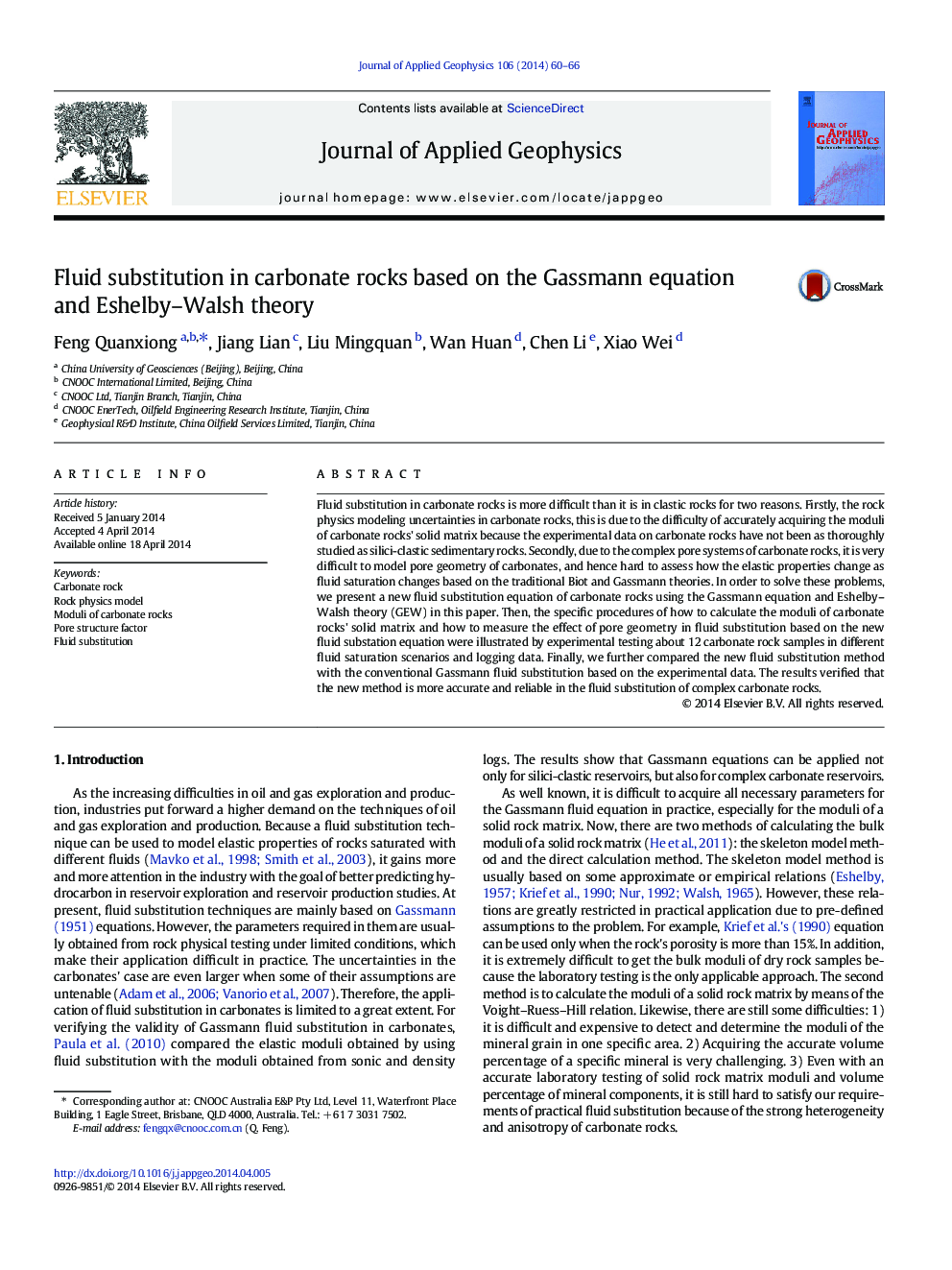| Article ID | Journal | Published Year | Pages | File Type |
|---|---|---|---|---|
| 4740131 | Journal of Applied Geophysics | 2014 | 7 Pages |
•Providing a method to calculate the compressive coefficient of a solid rock matrix•Analyzing the influence of solid rock matrix compressive coefficient•Analyzing the influence of pore systems on fluid substitution quantitatively•This fluid substitution method is relatively convenient, practical and reliable.•This method can acquire a more reliable result especially in carbonate rocks.
Fluid substitution in carbonate rocks is more difficult than it is in clastic rocks for two reasons. Firstly, the rock physics modeling uncertainties in carbonate rocks, this is due to the difficulty of accurately acquiring the moduli of carbonate rocks' solid matrix because the experimental data on carbonate rocks have not been as thoroughly studied as silici-clastic sedimentary rocks. Secondly, due to the complex pore systems of carbonate rocks, it is very difficult to model pore geometry of carbonates, and hence hard to assess how the elastic properties change as fluid saturation changes based on the traditional Biot and Gassmann theories. In order to solve these problems, we present a new fluid substitution equation of carbonate rocks using the Gassmann equation and Eshelby–Walsh theory (GEW) in this paper. Then, the specific procedures of how to calculate the moduli of carbonate rocks' solid matrix and how to measure the effect of pore geometry in fluid substitution based on the new fluid substation equation were illustrated by experimental testing about 12 carbonate rock samples in different fluid saturation scenarios and logging data. Finally, we further compared the new fluid substitution method with the conventional Gassmann fluid substitution based on the experimental data. The results verified that the new method is more accurate and reliable in the fluid substitution of complex carbonate rocks.
